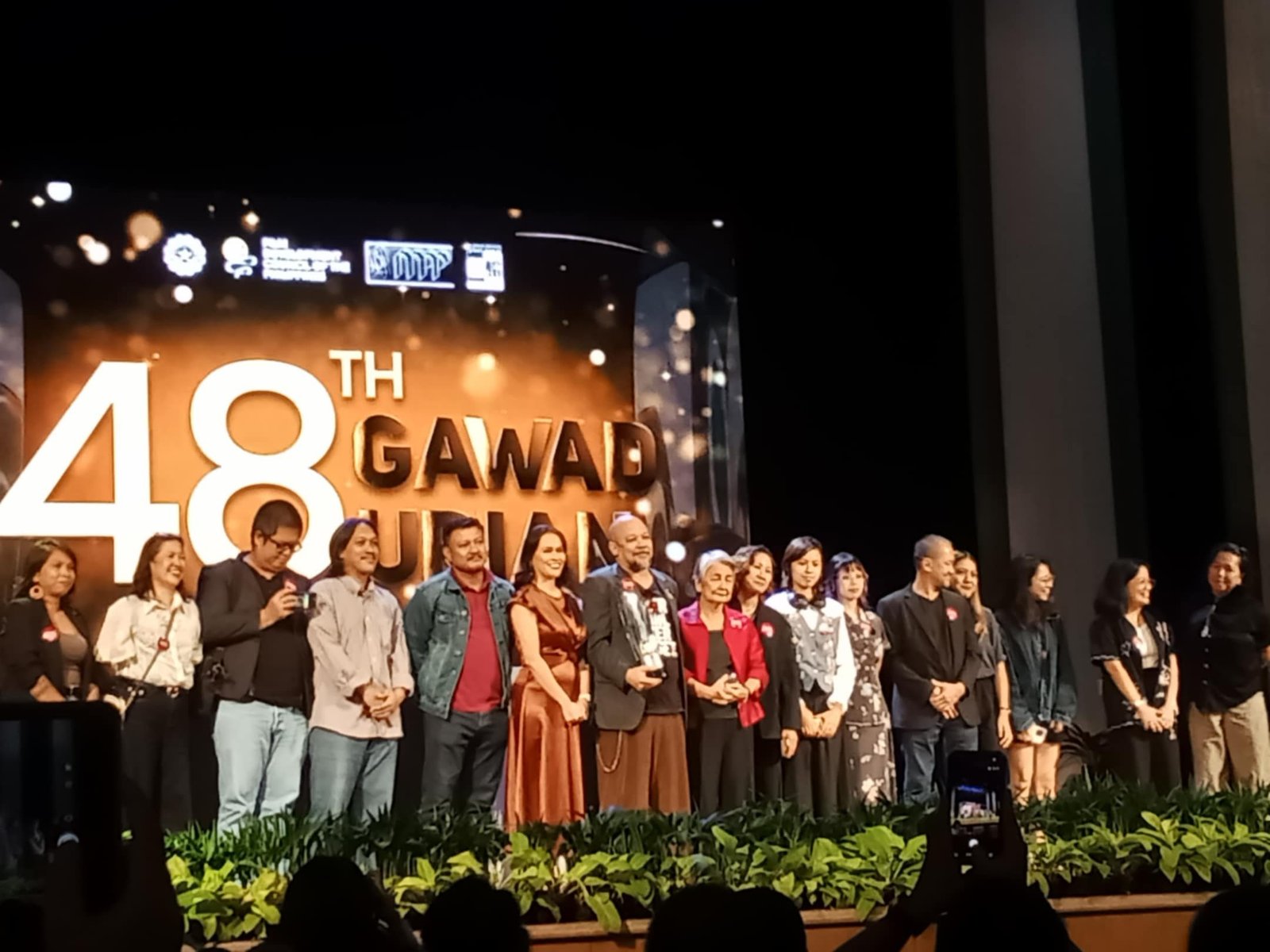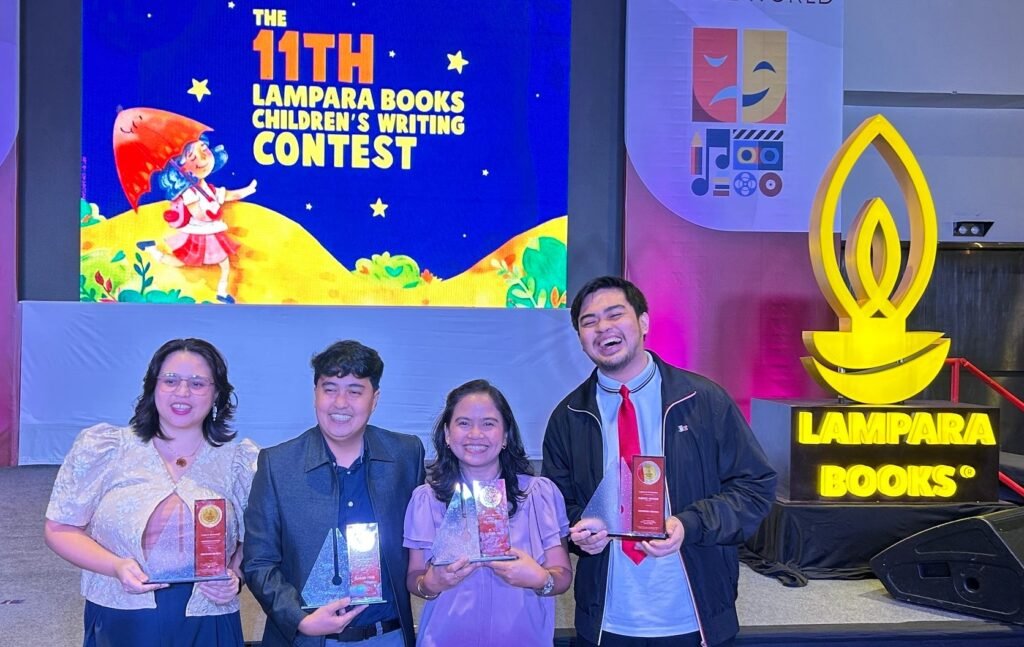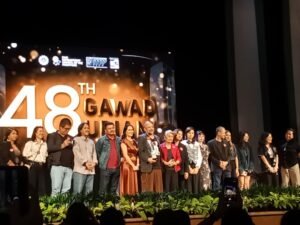MANILA, Philippines – At this year’s Manila International Book Fair (MIBF), the spotlight wasn’t just on classic children’s books or bestselling adult novels. The stage also belonged to middle-grade and young adult (YA) fiction — stories often seen less in library shelves and bookstores.
“We focused on these two categories this year because there are not enough materials for middle-grade and young adult readers,” Segundo Matias Jr., president of Lampara Books, said in his opening remarks.
Unlike picture books for younger children, stories for tweens and teens demand a different kind of storytelling — one that mirrors the growing pains of ages 8 to 18, while still keeping readers engaged. That challenge was at the heart of this year’s winning entries.
The 11th Lampara Books Children’s Writing Contest awarded four individuals during the fourth day of the MIBF 2025 at the SMX Convention Center on Saturday, September 13.
Iris Sheila Lopez and Arnold Subastil bagged top honors at the 11th Lampara Prize for the middle-grade and young adult categories, respectively, while Aldrine Anzures and Sherine Nicole Dimadura earned honorable mentions in the same categories.
Stories for tweens, teens
Writing for little kids is difficult, but for curious and confused teenagers at the peak of their emotions, it presents a different challenge as they’re caught “in between” — old enough to crave exploration, but still young enough to need guidance.
For this year’s Lampara Prize winners, their stories found the sweet spot of relatable experiences and useful lessons for middle-graders and young adults.
Lopez’s Rosalyn and the Milk Tea Cat, which won first prize in the middle-grade category, follows Rosalyn, a young girl adjusting after her best friend moved away, but found unexpected companionship in a creamy brown cat she named Pearl.
“As an adult, you forget how children think. When I was writing this story, I had to think of a way to make this relatable to kids, and friendship was one of those elements I needed,” said Lopez, a newsletter editor in her 40s.
The participants who joined the contest had to have attended the creative writing workshop organized by Lampara Publishing House, Inc. in Quezon City from December 2 to 5, 2024. During this workshop, writers like Lopez learned how to create stories for young readers.
One of the judges for the middle-grade category was Allysa Mae Santos from Lampara Books, who noted that stories should be kwela or lighthearted, apart from being didactic. She also highlighted that the titles had to be catchy right off the bat.
This was not a problem for Subastil’s winning piece: Saan Napupunta ang mga Nawawalang Nail Cutter. His story dives into navigating life through grief by relating the loss of a small useful item, a nail cutter, to the loss of a loved one.
Subastil’s story may be quite emotional, but the quirky title will invite readers to dive deeper into the book.
The judges also looked at how well the stories sparked a middle-grader or teenager’s imagination.
“I really liked the fantasy and magic realism aspects in the stories because they evoke creativity and imagination in young readers,” Santos said.
Perfect examples of these are the honorable mention stories: Anzures’ Libro ni Rin and Dimadura’s My Sister Lives in the Mango Tree, which both explored a world that will make its reader wonder.
A gateway to culture and history
Beyond jumping worlds through their imagination, readers also get the chance to learn more about Filipino culture and history.
In Anzures’ story, Philippine mythological creatures like tikbalang, kapre, and manananggal come to life. Meanwhile, Dimadura introduces old superstitious beliefs in her story.
“I don’t remember seeing the mention of superstitious beliefs in the books I’ve read growing up, so I thought it would be nice to put that as a central element in my story,” shared Dimadura, hoping that young readers will always have a childlike wonder even as they grow.
Lopez also hopes these fun, magical elements they add can redirect children’s attention from screens to books. Her story also features magical realism — the cat Pearl joins a cat academy where it learned arnis, a Filipino martial art.
“After I hook my readers with the cute detail of the milk tea-colored cat, I add cultural elements that would teach them a thing or two,” she said.
Another easter egg Lopez added was a Visayan Leopard Cat character, a vulnerable and endemic species to some islands in the country.
By weaving in these details, Lopez and her fellow writers show how Filipino stories can be both entertaining and culturally grounded — something often missing in the YA books that dominate local shelves.
“Locally, YA is quite dominated by Western romance titles, while educational books are sometimes expected to read like Shakespeare,” Santos said.
With stories like the ones submitted in the contest, Lampara Books believe that they can offer options that are more relatable to pre-teen and teen Filipino readers. These aren’t just alternatives to imported titles, but also part of a bigger effort to address a national challenge.
Battling the reading crisis
One of the goals of The Lampara Prize is to seek more stories for children and young adults, and this roots from a national challenge: the reading crisis.
Matias said that the demand for more age-appropriate books for middle-grade and young adult readers are not just from publishers, but also from learning institutions.
“We want to raise awareness that we’re facing a shortage of more suitable material on top of low literacy rates,” he said.
The Lampara Prize helps address this problem in several ways: by supporting the creation of new titles for middle-grade and young adult readers, and by honoring Filipino writers and encouraging them to craft stories for a wider age group.
First introduced in 2011, the award ran for a decade before its pause in 2022. This 2025, Lampara Books proudly resumed its mission to put the spotlight on Filipino talent, promote the growth of Philippine literature, and champion stories that both enrich young minds and showcase the richness of local culture.
Admittedly, the winning writers for this year shared they don’t usually write for this age group. Lopez agrees there isn’t enough middle-grade and YA literature, noting that it’s likely because it’s difficult to write for their age.
“The challenge for writers is getting these kids’ attention, and on top of that is making our stories relatable to them,” she said.
Subastil shared a realization he had from their creative writing workshop. “Kids, especially teenagers, listen to people who understand them,” he explained, adding that the challenge for him was learning to “speak their language.”
All four writers shared that this was their first time winning a story writing contest, but knowing the reading crisis in the country, they believe the real reward lies in creating stories that can reach young readers.
“It was an honor! It felt like a responsibility because I know that my work is needed especially in the height of a reading crisis, and this award meant to me that a child can learn something from what I’ve written,” said Subastil.
Dimadura said the low literacy problem did not discourage her, but instead, fueled her desire to write more.
Although Anzures admitted there’s a bit of fear, his own community of writers helps him carry on with his advocacy.
“This fear that I have is always replaced by relief whenever I remember that I’m not alone in this cause. Writers support writers alike, and non-writers continue to advocate for reading,” he added.
To them, the goal is to simply make their stories exist. They believe that one day, a kid will pick up their book and it will be their gift — a story that speaks to them. – Rappler.com











